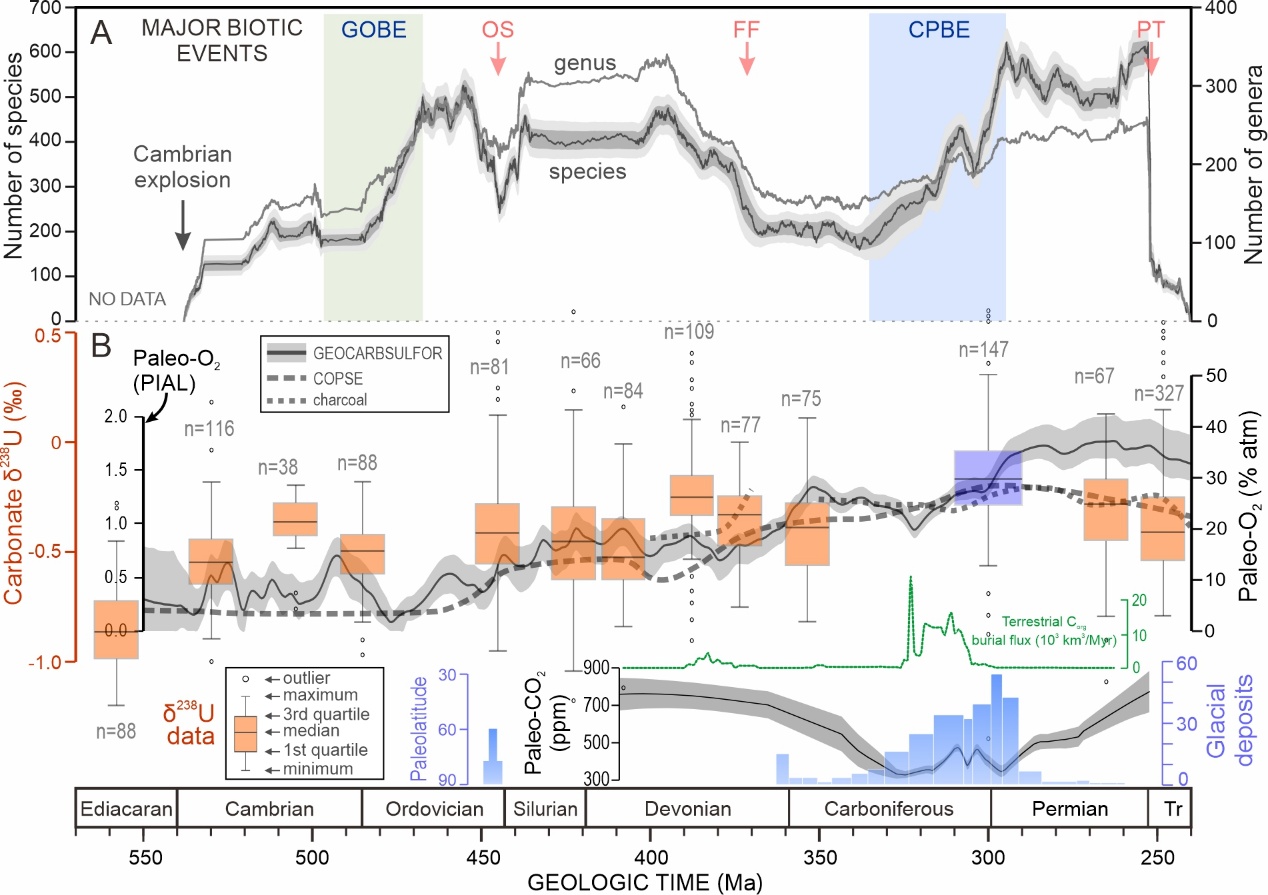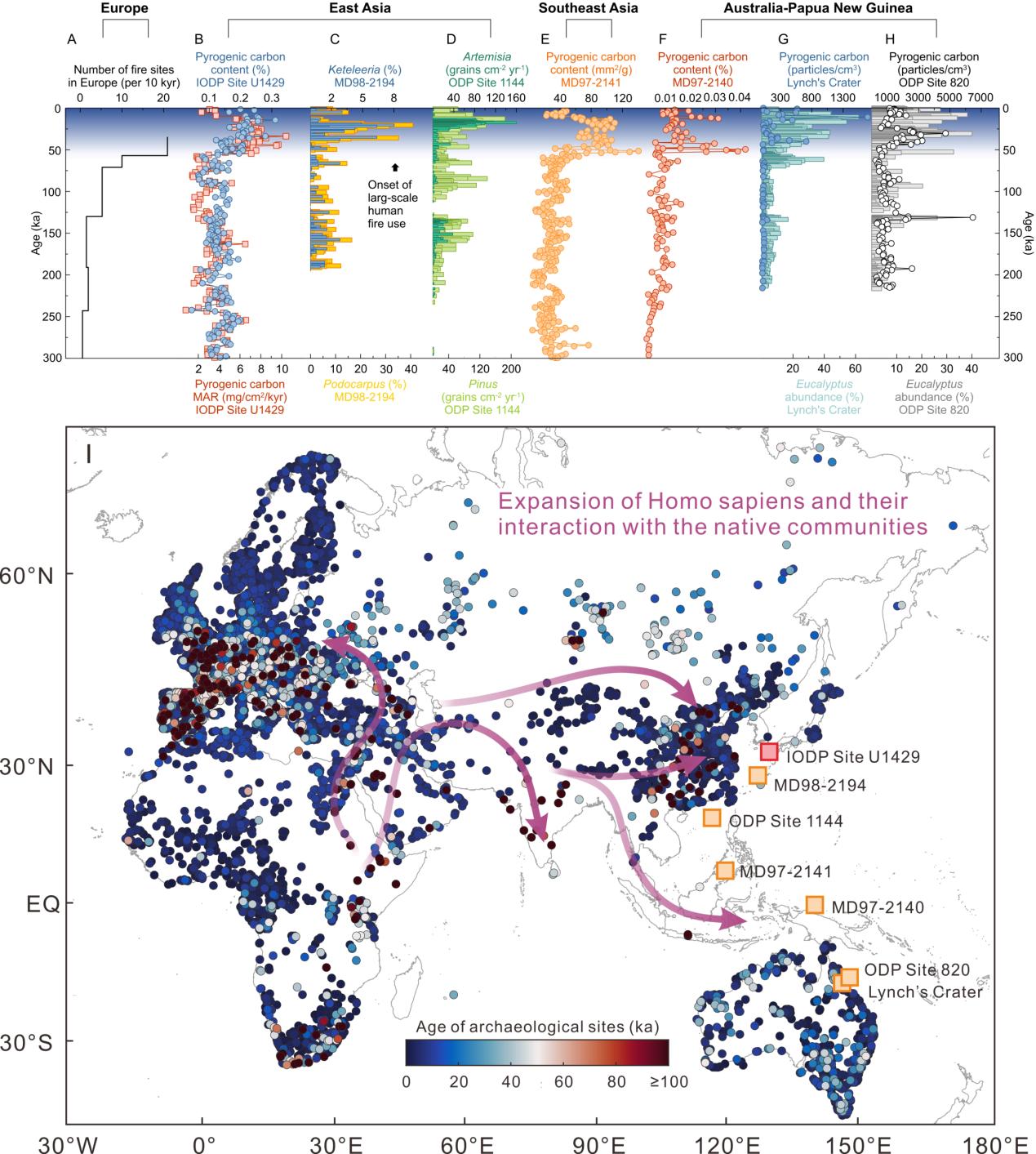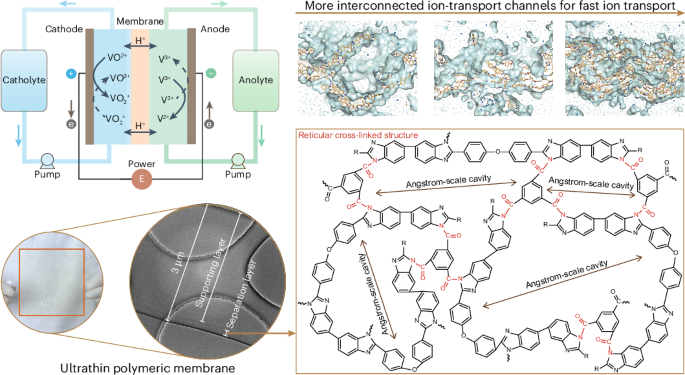2025-06-24 中国科学院(CAS)
 Paleozoic marine biodiversity, atmospheric composition, and seafloor oxygenation history. (Image by Prof. CHEN Jitao’s team)
Paleozoic marine biodiversity, atmospheric composition, and seafloor oxygenation history. (Image by Prof. CHEN Jitao’s team)
<関連情報>
- https://english.cas.cn/newsroom/research_news/earth/202506/t20250624_1046056.shtml
- https://www.pnas.org/doi/10.1073/pnas.2420505122
大気中の酸素濃度が高く、氷室のような状況下で、海洋無酸素状態が繰り返された Repeated occurrences of marine anoxia under high atmospheric O2 and icehouse conditions
Jitao Chen, Shihan Li, Shuang Zhang, +6 , and Isabel P. Montañez
Proceedings of the National Academy of Sciences Published:June 23, 2025
DOI:https://doi.org/10.1073/pnas.2420505122
Significance
The overall well-oxygenated Phanerozoic ocean–atmosphere system experienced discrete periods of ocean anoxia that are closely associated with global carbon cycle perturbations under primarily greenhouse climate states. Here we document, through coupled U and C isotopic excursions and biogeochemical modeling, repeated occurrences of CO2 -induced marine anoxia at the 105 -y-scale during the highly oxygenated, but overall low CO2, deep glacial (310 to 290 Ma) of the penultimate icehouse. Our joint proxy-model inversion approach indicates moderate-scale seafloor anoxia (4 to 12%) that may have led to a pause or decline in marine biodiversity and reveals the potential for the development of widespread marine anoxia under CO2 concentrations not much different from today or projected for within this century.
Abstract
The Late Paleozoic Ice Age (~340 to 260 Ma) occurred under peak atmospheric O2 (1.2 to 1.7 PIAL, pre-industrial atmospheric levels) for Earth history and CO2 concentrations comparable to those of the preindustrial to that anticipated for our near future. The evolution of the marine redox landscape under these conditions remains largely unexplored, reflecting that oceanic anoxia has long been considered characteristic of carbon cycle perturbation during greenhouse times. Despite elevated O2, a 105-y period of CO2-forced oceanic anoxia was recently identified, but whether this short-term interval of widespread oceanic anoxia was anomalous during this paleo-ice age is unexplored. Here, we investigate these issues by building a high-resolution record of carbonate uranium isotopes (δ238Ucarb) from an open-marine succession in South China that permits us to reconstruct the global marine redox evolution through the deep glacial interval (310 to 290 Ma) of near peak O2. Our data reveal repeated, short-term decreases in δ238Ucarb coincident with negative C isotopic excursions and rises in paleo-CO2, all superimposed on a longer-term rise in δ238Ucarb. A carbon–phosphorus–uranium biogeochemical model coupled with Bayesian inversion is employed to quantitatively explore the interplay between marine anoxia, carbon cycling, and climate evolution during this paleo-glacial period. Although our results indicate that protracted, enhanced organic carbon burial can account for the long-term O2 increase, seafloor oxygenation, and overall low CO2, episodic pulses of C emissions had the potential to drive recurring short-term periods of marine anoxia (with 4 to 12% of seafloor anoxia) despite up to 1.7 times higher atmospheric O2 than present day.



